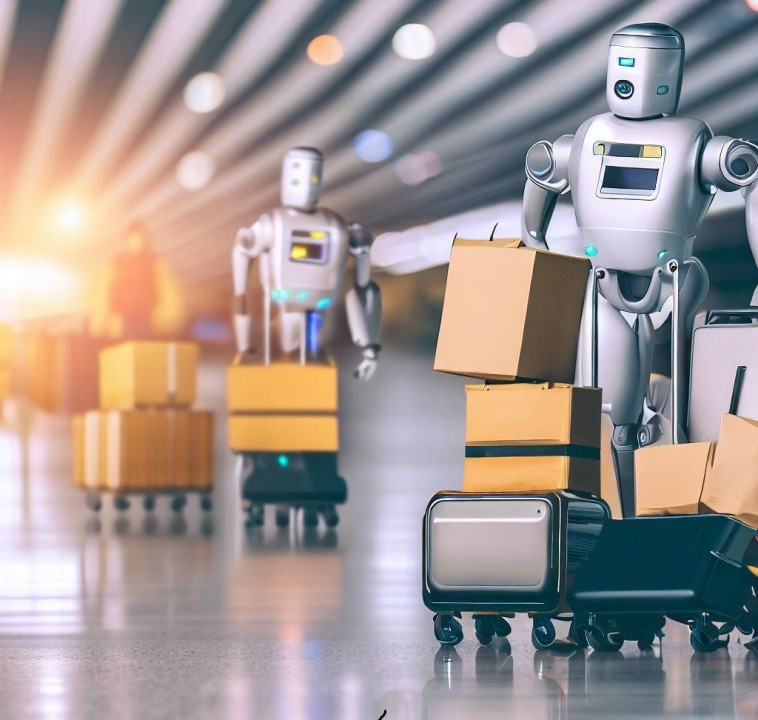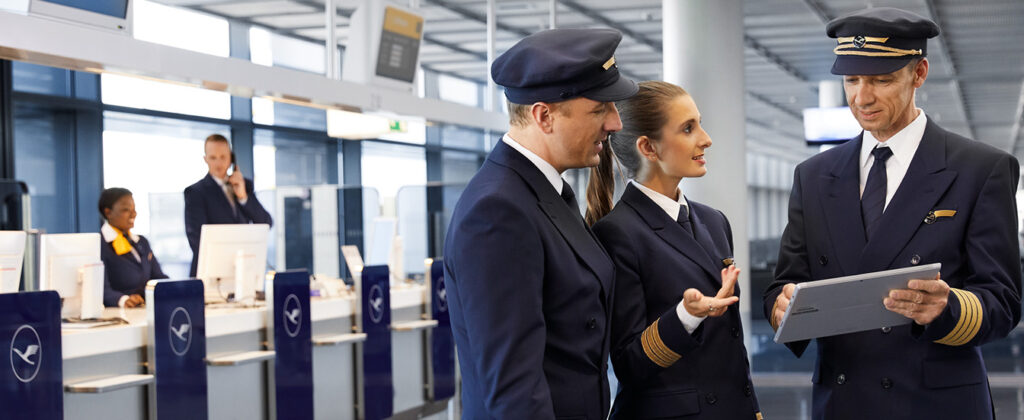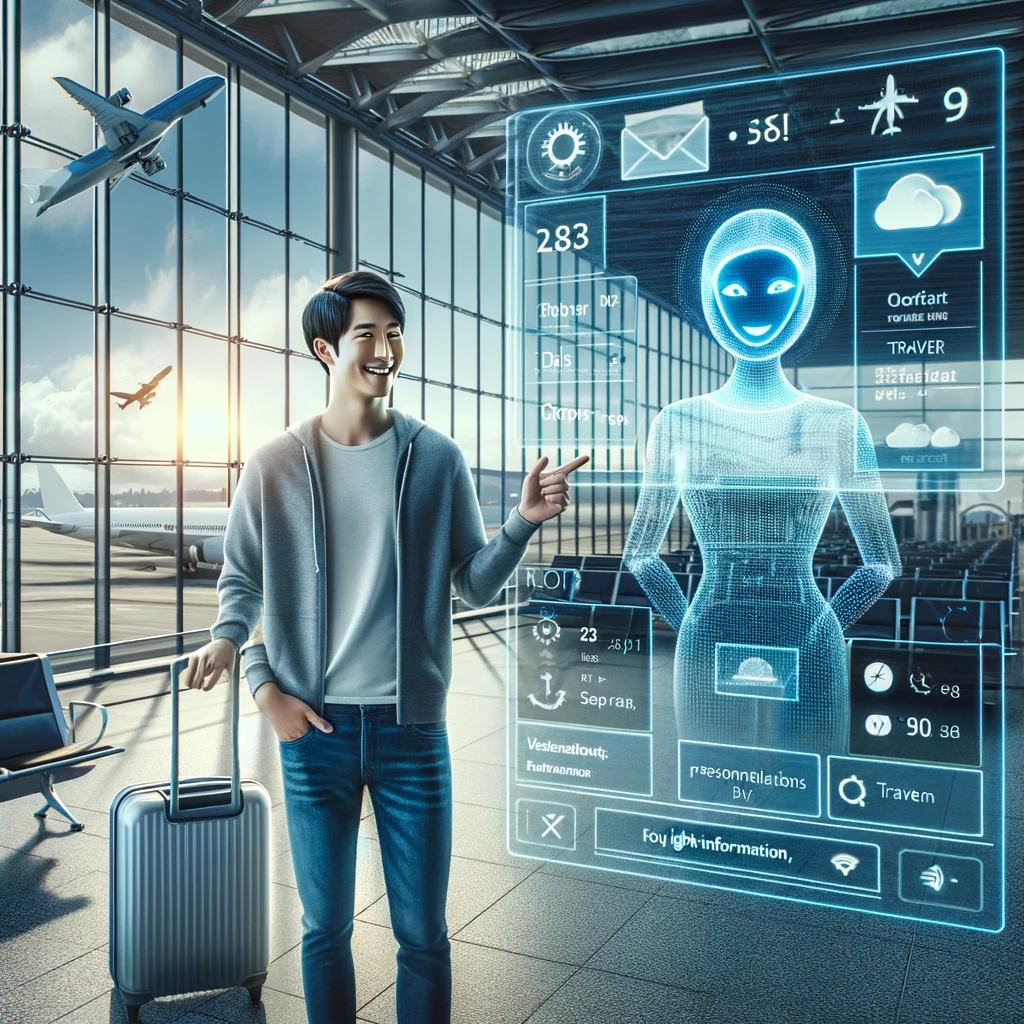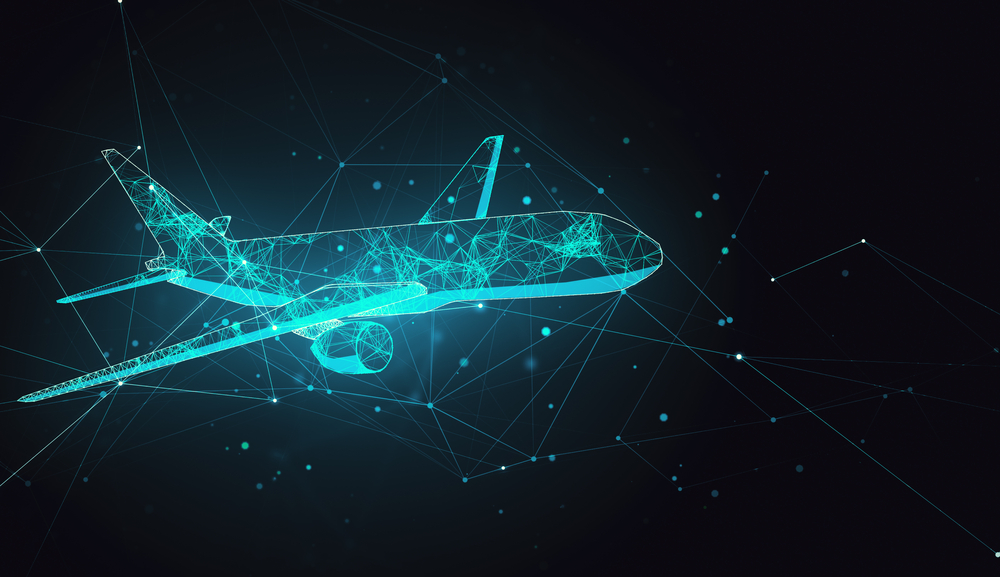7 Amazing Ways, AI is Revolutionizing the Aviation Industry
Introduction
Artificial Intelligence has proved to be a revolutionary force across various industries, and aviation is no exception. From enhancing operational efficiency to improving passenger experience, its applications in aviation are diverse and far-reaching.
This linked video, titled as “AI’s Impact on Aviation: 10 Ways It’s Changing the Industry” skillfully covers the impacts of AI on aviation industry.
As the aviation sector bounces back after COVID-19, competition is slated to intensify as airlines take the advantage of customers, anxious to travel after prolonged lockdowns. Airlines that proactively innovate and incorporate new technologies will be the clear winners.
This comprehensive guide covers various aspects of the technology in aviation, highlighting how it revolutionizes the industry.
7 Amazing Ways, AI is Revolutionizing the Aviation Industry
By understanding and leveraging these artificial intelligence’s applications, the aviation industry can continue to innovate and enhance passengers’ overall travel experience.
Application in Aircraft Operations
Predictive Maintenance
Predictive maintenance is one of the significant applications in aviation. By analyzing data from various sensors on the aircraft, it can predict potential technical failures before they occur. This proactive approach reduces unplanned ground time of the aircraft and enhances flight safety. The very process is performed as under:
Data Collection: Sensors on aircraft collect vast amounts of data during flights.
Data Analysis: Algorithms analyze this data to identify patterns that indicate potential issues.
Maintenance Scheduling: Based on the analysis, maintenance can be scheduled before a failure occurs, preventing costly delays/disruptions and enhancing flight safety.
Let’s just take the example of Airbus for the understanding. Airbus, one of the leading aircraft manufacturers, applies it to analyze data coming from its various factories, predicting variations, if any, in the manufacturing processes occur. This enables them to take precautionary measures when it is easier and less costly or even prevent them altogether. Predictive maintenance will also help the airline industry and aircraft manufacturers save money in the long run due to fewer parts replacements and overhauls.
Evolution of Autonomous Aircraft
While fully autonomous commercial aircraft appear to be a thing of the future, this technology is already playing a vital role in the required advancement. The intelligence-based systems can assist pilots by assuming routine tasks from them (as outlined below), thus allowing them to focus on more complex decision-making processes.
Autopilot Systems: Modern autopilot systems use the technology to manage stable flight, navigation, and landing.
Big aircraft manufacturers like Airbus and Boeing are having studies underway, to drive autonomous aircraft forward. In December 2020, Boeing undertook its test flights of un-crewed aircraft by using AI algorithms, speeds of which were recorded up to 270 kilometers per hour. The company is confident that this successful test run will propel autonomous technology to the forefront in the future. Meanwhile, other sorts of airport processes such as ground handling, loading, fueling, cleaning, and aircraft safety checks can also be automated.
Application in Air Traffic Management
Traffic Flow Optimization
This technology can optimize the flow of air traffic, reducing congestion and improving efficiency. By analyzing historical and real-time data, the systems can predict aircraft traffic patterns and suggest optimal routes.
Demand Prediction: It can forecast air traffic demand based on various factors, including historical trends, predictive models and real-time data.
Dynamic Routing/Flight Route Optimization: Based on predictions, algorithms can dynamically route aircraft to minimize delays and reduce fuel consumption. Machine learning-enabled systems can determine optimal flight routes, achieve savings through lower operational costs, along with higher customer retention. From this utility, various route characteristics, such as flight efficiency, air navigation charges, fuel consumption, and expected congestion level, can be analyzed.
Air Traffic Management
It can benefit aviation industry in to critical tasks such as air traffic management. Machine learning shall not replace human air traffic controllers. Instead, aim is to automate repetitive, predictive tasks to free up human employees for more complex and important tasks.
In August 2021, the UK government approved a project (having budget of £13.7 million in partnership with The Alan Turing Institute (UK’s data science research organization) and NATS (National Air Traffic Services) for the implementation of trials of the first-ever AI system in airspace control. The project was named as Bluebird.
The project entails assembling an interdisciplinary team of data scientists, engineers, and mathematicians, aimed at studying how AI systems can work side-by-side with humans to create an ATM that is intuitive, sustainable, and risk-free. In this project, machine learning algorithms and data science recommend collaborative actions for air traffic control, encompassing climate change policies such as achieving net-zero carbon emissions in the future through better route planning and lower fuel consumption.
Collision Avoidance
Technology-powered collision avoidance systems enhance the safety of both manned and unmanned aircraft. These systems can detect and predict potential collisions, allowing for timely evasive actions.
Surveillance Systems: The technology analyzes data from radar and other surveillance systems to detect potential collision’s threats.
Evasive Actions: The system can recommend or automatically perform evasive maneuvers to avoid collisions of aircraft.
Application in Airport Operations
Passenger Experience
It is significantly improving the passenger experience at airports. From check-in to boarding, the technology streamlines various processes, reducing wait times and enhancing overall satisfaction.
Self-Service Kiosks: Technology-powered kiosks enable faster passenger check-in and luggage-drop processes.
Facial Recognition: Algorithm-based facial recognition systems expedite security checks and boarding processes.
Personalized Services: AI can provide personalized recommendations and services to passengers based on their preferences, choices and travel history.
Baggage Handling
Use of AI enhances baggage handling efficiency by reducing errors/omissions and ensuring timely delivery of luggage. These systems can track and trace baggage throughout the airport.

Tracking Systems: Artificial intelligence uses RFID and other technologies to track baggage in real time.
Sorting and Delivery: Artificial intelligence-based algorithms optimize the sorting and delivery of baggage, minimizing delays and errors.
Application in Flight Scheduling and Crew Management

Flight Scheduling
Artificial intelligence can optimize flight schedules to maximize aircraft utilization and minimize delays. By analyzing historical data and real-time conditions, the systems can create more efficient schedules.
Demand Forecasting: Artificial intelligence predicts passenger demand, enabling airlines to adjust schedules accordingly.
Resource Allocation: This technology optimizes the allocation of resources, including aircraft block hours and crew, to minimize downtime.
Flight Management: As flight delays are dependent on a large number of factors, including weather conditions and situation at other airports, predictive analytics and technology can be applied to analyze massive real-time data to predict flight delays, update departure time, and re-book customers’ flights on time.
Crew Management
Artificial intelligence assists in managing air crew schedules, ensuring compliance with regulations and improving work-life balance for the crew members. For example, staff costs of the crew members and flight attendants in leading major U.S. airlines have significantly grown and account for the second-largest line item (next to fuel cost) of the total operating cost of the airlines. Big data analysis can be pivotal in finding the optimum level to schedule an airlines’ crew, to maximize their service time and better employee retention.
Scheduling Algorithms: The technology creates optimized crew schedules that comply with regulations and considers crew preferences, as well.
Fatigue Management: It predicts potential fatigue issues and adjusts schedules to ensure crew’s well-being and safety.
Application in Airline Revenue Management
Dynamic Pricing
In a bid to maximize revenue, airlines are optimizing their already published base fares, earlier calculated according to passenger journey, flight path, and broad segmentation. Further adjustments in fares are made after evaluating details about the customers and prevailing market conditions. Airline use a variety of variables to determine flight ticket prices: whether the travel is during the holidays, the number of free seats on the plane, etc.
According to John McBride, product management director for PROS, a software provider for renowned airlines including Lufthansa, Emirates, and Southwest, a number of operators have already put in place dynamic pricing.
Demand Analysis: AI analyzes demand patterns to adjust prices in real time.
Pricing Optimization: Or airline revenue management is similar to dynamic pricing. Maximization of sales revenue is contemplated through machine learning algorithms, in the longer term to achieve optimal booking of all flights. It entails historical data analytics like past bookings, flight distance, willingness to pay, etc.
Fraud Detection
Through analyzing of specific customers’ flight and purchase patterns, algorithms identify passengers with suspicious credit card transactions and eliminate fraudulent cases, saving airline and travel companies from huge losses.
Ancillary Revenue
AI helps airlines maximize ancillary revenue by offering passengers personalized recommendations, for additional services and products.
Personalized Offers: It processes passenger data to provide personalized offers for seat upgrades, extra baggage and other services.
In-Flight Sales: It optimizes in-flight sales by recommending products based on passenger preferences.
Machine learning can also be beneficial for the air freight industry. For example, through predictive models, forecast can be made about on-time shipment and find the most optimal routes. In addition, intelligent systems can help identify problematic incidents and thus increase operational efficiency.
Application in Customer Service
Artificial intelligence can be utilized for optimization of pricing strategies, increase customer satisfaction and engagement and improve the overall flight experience. Here’s a list of some of the potential use scenarios in the aviation industry:

Chatbots and Virtual Assistants
AI-powered chatbots and virtual assistants provide 24/7 customer support, handling common queries and tasks efficiently. Kayak, a popular travel booking service, allows flight planning for your next trip directly from your Facebook Messenger app. Their type of chatbot is humanlike, understands simple questions, and responds in a casual, conversational style.
Automated Customer Support: Chatbots handle routine queries from customers, freeing up human agents for more complex issues.
Personalized Assistance: Virtual assistants provide customized travel recommendations and assistance, based on passenger preferences.
Conversational IVR: Efficiency of the agents can be significantly improved by fully or semi-automating calling process in contact centers. According to recent research, advanced virtual assistants (powered by NLP solution) shall be the next step, onwards from today’s chatbots, resulting in conversational and intuitive sessions, and semantic and deep learning techniques such as deep neural networks (DNNs).
Sentiment Analysis on Social Media
It analyzes customer feedback to gauge sentiment and improve services.
Service Enhancement: Airlines can use insights from sentiment analysis to enhance their services and address common issues, being faced by customers.
Application in Enhancing Safety and Security
Security Screening
Artificial intelligence enhances security screening processes at airports, improving both efficiency and accuracy.
Facial Recognition: AI-powered facial recognition systems expedite the identity verification processes of the passengers.
Threat Detection: AI analyzes security camera footage and other data, to detect potential threats and anomalies.
In-Flight Safety
Artificial intelligence contributes to in-flight safety by monitoring various parameters and assisting pilots in decision-making.
Real-Time Monitoring: AI systems monitor aircraft systems and environmental conditions in real time.
Decision Support: It provides pilots with real-time data and recommendations to enhance flight safety.
Understanding Generative Artificial Intelligence in Aviation
These are advanced algorithms capable of generating content, ranging from text to simulations, and have been trained on vast datasets. In aviation, these capabilities take shape of a variety of practical applications that can enhance efficiency, reduce operational costs, and improve the overall passenger experience.
Applications of Generative Artificial Intelligence
- Travel and Booking Assistance: From handling bookings to managing loyalty programs, it automates and personalizes interactions, making processes more efficient.
- Operational Support: It assists in predictive maintenance and inventory management, helping airlines minimize downtime and optimize stock levels.
- Advanced Simulations: For training purposes, the technology can create realistic scenarios tailored to individual pilot needs, enhancing training outcomes without physical constraints.
- Document Navigation: Generative artificial intelligence can act as a sophisticated search engine, swiftly navigating through extensive technical documents and manuals to retrieve and contextualize critical information, thereby boosting decision-making efficiency and accuracy.
Ethical Considerations and Challenges
Data Privacy
The use of it entails collecting and analyzing huge amounts of data, raising concerns about personal privacy and data security.
Data Protection: Airlines must undertake robust data protection measures to safeguard passenger information.
Transparency: Ensuring transparency in how data is collected and used is crucial to maintaining passengers’ trust.
Bias and Fairness
The algorithms can exhibit bias, culminating in unfair treatment of passengers or employees.
Algorithmic Fairness: Airlines must ensure their systems are designed and tested to minimize bias.
Regular Audits: Conducting regular audits of systems/algorithms can help identify and address potential biases.
Job Displacement
The automation of various tasks through technology could lead to job displacement/redundancies in the aviation sector.
Workforce Transition: Airlines should invest in retraining and upskilling programs to help employees transition to new roles.
Human-AI Collaboration: Emphasizing the collaborative potential of the technology and human workers can create new opportunities.
Future of Artificial Intelligence in Aviation
Advanced Autonomy
As the technology advances, the possibility of fully autonomous commercial aircraft becomes comparatively more realistic. Future AI systems are expected to be capable of handling all aspects of flight, from takeoff to landing, with minimal human intervention.
Regulatory Approvals: Achieving full autonomy will require rigorous testing and regulatory approvals.
Safety Assurance: Ensuring the safety and reliability of autonomous systems will be paramount.
Enhanced Personalization
The technology will continue to enhance personalization in aviation, offering passengers a more tailored and enjoyable travel experience.
Custom Travel Itineraries: It will create highly personalized travel itineraries, based on individual preferences and behaviors.
Seamless Travel Experience: From booking to arrival, every aspect of the travel experience will be streamlined, making it more seamless, convenient and enjoyable.
Conclusion
Artificial intelligence is undoubtedly transforming the aviation industry, offering numerous benefits ranging from enhanced operational efficiency to improved passenger experiences. As it continues to evolve, its applications & implications in aviation will significantly expand, paving the way for a safer, more efficient and personalized air travel experience.
However, addressing ethical considerations and ensuring a smooth transition for the workforce will be critical in fully exploiting its true potential in aviation.


